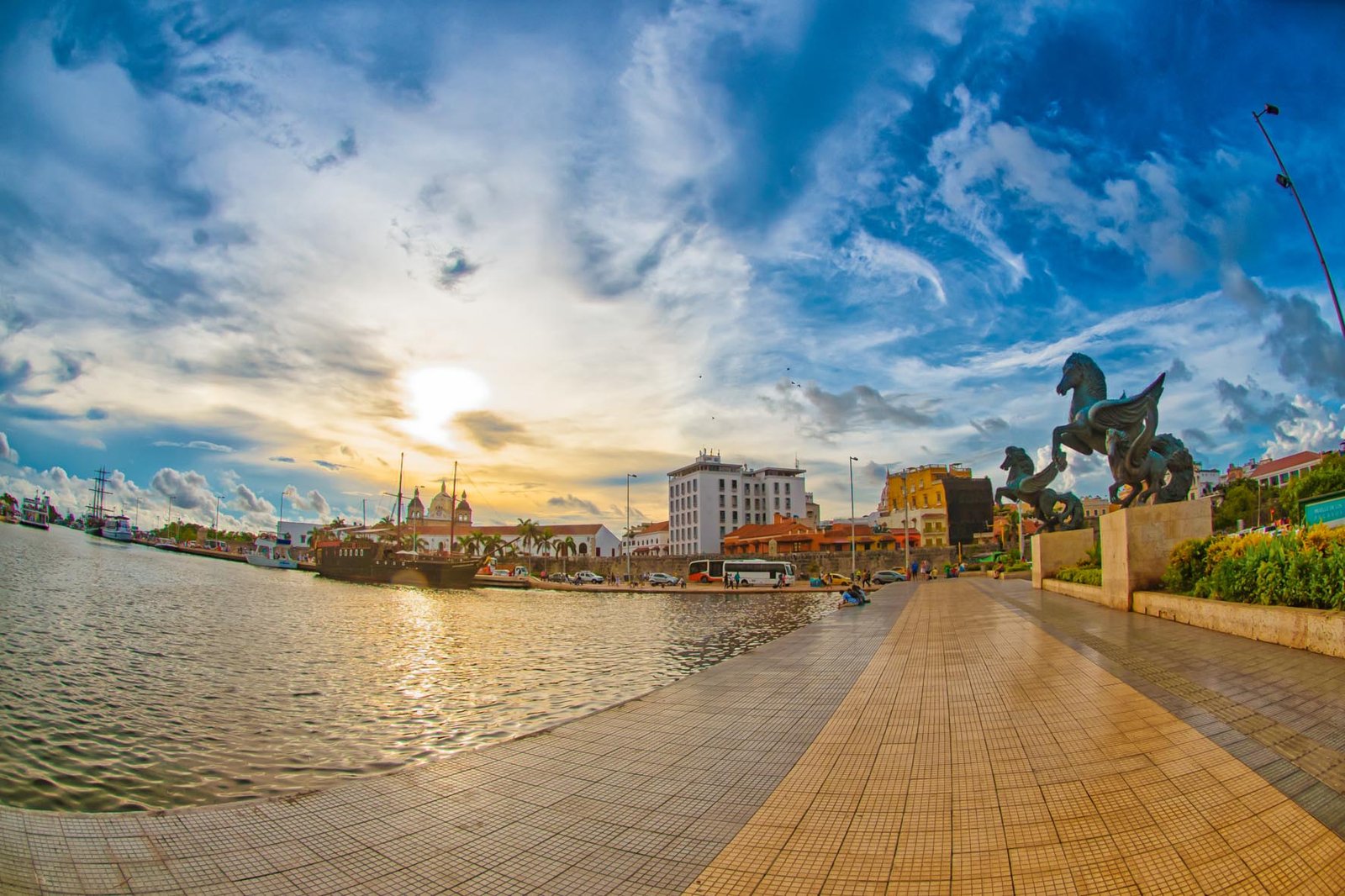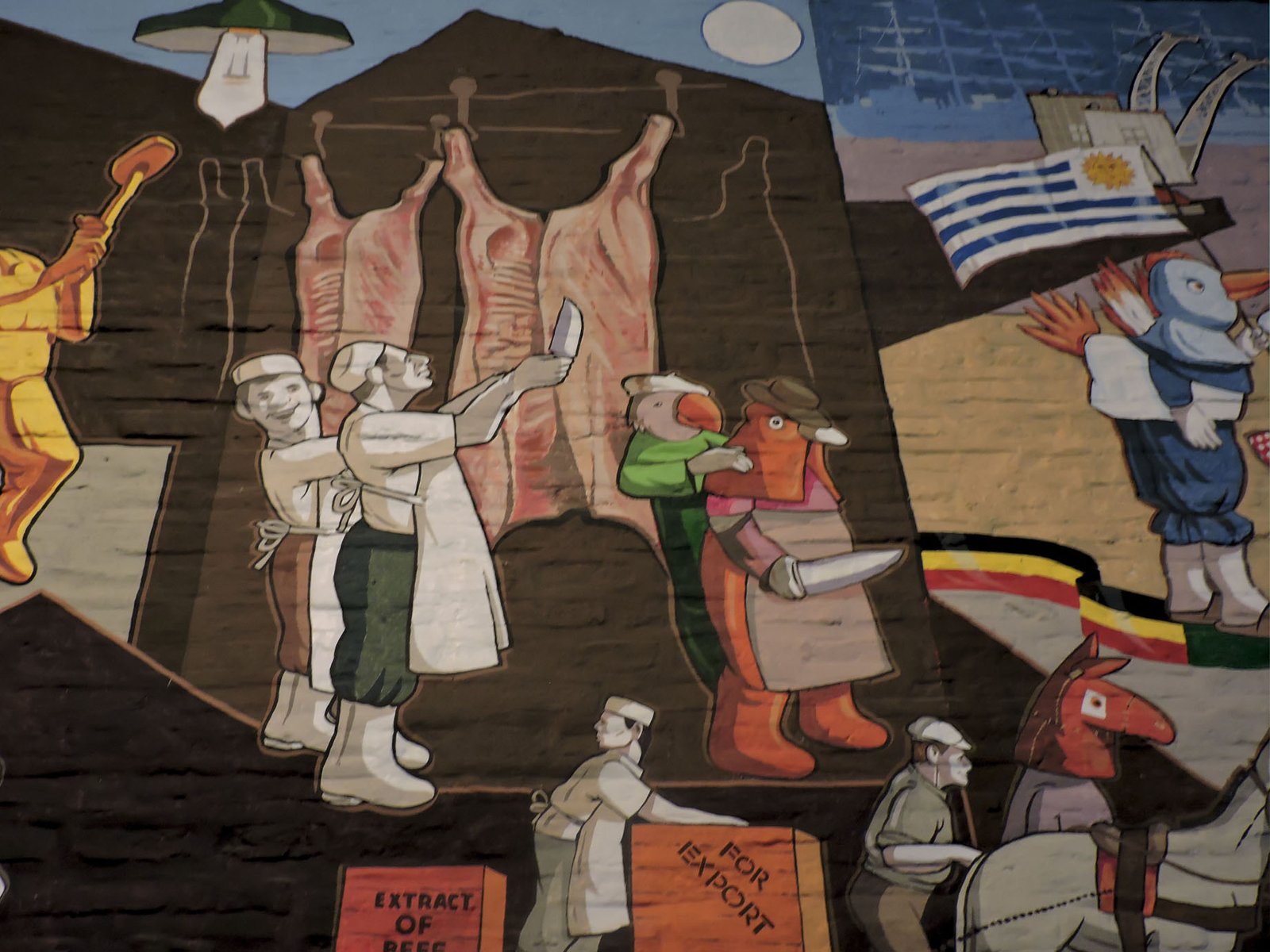
Cartagena is for Everyone
By Andrea Jiménez Jiménez
Photos Javier Pinzón Gómez
You can never be late to Cartagena, because she is always awake. During the day, she will give you a warm hug —and she might just burn you— with 86 degree temperatures and sunshine. But even at night, she still shines. The Caribbean Sea is always there, lapping at the beaches of Manzanillo, Marbella, Bocagrande, El Laguito, and Castillogrande. The beach you choose will depend on where you are, but the sea is always there to receive visitors at the languid pace that permeates the city.
The night has its own rhythm that emanate from the sea, which becomes invisible as the darkness swallows it up, leaving just a murmur. Guides turned coachmen tell stories to visitors in horse drawn carriages. Cartagena enchants with her Historic Center, where wines are served by the glass, impromptu violins play, and the streets have centuries-old names. Tourists’ cameras flash across the doors, accentuating the colorful façades.
Cartagena is both one and many. You can sense it in the walled city and the contrast between the neighborhoods and tourists areas. Inside the walls, in the Corralito de Piedra, it feels like there are as many Cartagenas as people who visit it. Everyone fits in this marvelous city.

Within her walls, some visitors seek romance and luxury. For them, Cartagena is dreamy and ostentatious, providing exclusive patios and signature cuisine. Spend the days on the beaches or in swimming pools that overlook the infinite stretch of the city. This Cartagena offers nights of handheld fans and exotic dishes served in top-tier restaurants.
If you are seeking luxury, you can find it in any place that bears the name of a saint, such as the Cloister of Santa Clara, which has been converted into a hotel with spaces to inhabit and admire. The presidential suite is inspired and adorned by the works of the maestro Fernando Botero. Or San Pedro, the most beautiful plaza in the city with a sanctuary and outdoor cafe of the same name.
The list goes on: San Toribio, Santo Domingo, Santa Catalina de Alejandría. Cartagena’s churches, her cathedral, her intact faith. Every weekend there are weddings with palanqueras, white-dressed Afro-Colombian women. Each wedding is accompanied by awe-inspiring fireworks and nights on yachts and at beach parties, with signature cocktails at dusk.

Cartagena is magical and, if you have the right budget, its opulence can be a revelation. But there is magic enough for everyone. The most recent Cartagena is the young one, the one with hostels, the adventurous one. The one holding a backpack and using Google Maps. This Cartagena is much more economical and just as fascinating. Terraces feature swimming pools filled with inflatable characters and fashionable music, reggaetón, and alternative sounds. Here you’ll find perfectly Instagrammable moments as well as beers and mojitos. This is the relaxed Cartagena. The hostels, catering to visitors from around the world, provide all you need to have a good time. International travelers meet to eat, share beers in the afternoon, or dance together at night to electronic music or champeta.
Of course, champeta is synonymous with Cartagena! It is danced every night in her neighborhoods, her Historic Center, and her nightclubs. And Champeta provides the inspiration for the nights of Champetú, the party —now famous— that was invented about three years ago to make this quintessential Cartagena dance style a fixture of the nocturnal calendar. Busses filled with revelers leave from the Convention Center, delivering partiers to the start of the party.
For many tourists, Champetú is the only contact they have with the real Cartagena, the one that is not for tourists, but for everyone, locals and visitors alike. The aesthetic of the Creole champeta melds the charms of the city in one long-awaited night on the local calendar.

If there is no Champetú during your visit, all is not lost. Getsemaní, the quintessential Cartagena neighborhood, which has survived inside the walls despite gentrification, has another hidden secret. On Media Luna Street, anything goes thanks to the neon vibe and Afro beat of Kilele, where the dancing crowd raises the intensity of the night.
For extreme partiers and neophytes alike, Alquímico is the place to be. It is a converted mansion with a crazy rooftop and an abundance of “sensory experiments,” as the owners like to describe their cocktails. The menu includes lobster in coconut sauce, for the gourmand, and stuffed arepa and cheese carimañolas for diners who love local flavors. Inside the colonial mansion, the reggaeton plays on. On the rooftop, the DJ plays electronic music for yet another experience.
In Cartagena, nothing is the same from above and the rumba from up high is one of the most sought after experiences. There is something for all tastes, but you might find the Torre del Reloj, where hundreds of lights shine around the terraces, most tempting. If you are looking for something more exclusive, try TownHouse, a lounge with an exquisite atmosphere, signature cocktails, and tapas. It is located next to the Plaza Fernández de Madrid and counts the ChocoMuseo, or Cocoa Museum, as a neighbor.

Flavors of all kinds about in Cartagena! Try chocolates from the ChocoMuseo, cocadas, which are sweet coconut candies, and papaya caballito sweets sold by the brightly-dressed Afro-Colombian women, who can be found along the walls with basins full of coconut-based biscuits and fruits. There is also the pionono, a fluffy, local delicacy made with dulce de leche, which is said to taste better with a Kola Román, a soda that is famous along Colombia’s Caribbean coast.
You can find popsicles and ice cream, with or without toppings. The gelaterías have made handmade ice cream the most popular way to beat the fire-hot heat of Cartagena’s days and nights. The most famous one could be Paradiso, with its classic Italian name and pink decor that appeals to the child in everyone.
But if there is a universal flavor in Cartagena, it’s Cartagena posta.
It’s nothing more than a cut of beef bathed in a sweet piloncillo syrup and the bitter notes of a black sauce, never better served than with coconut rice and slices of banana or patacones, fried plantains. Add limonada or piloncillo water and the menu will be unforgettable and almost historic. Only a beer could make it better.

Cold beer is another great way to fight the heat. Enjoy one at Donde Fidel, the quintessential bar for lovers of beer from the Antilles and the Caribbean. Found on the road toward Getsemaní, Quiebracanto is the most famous corner of Cartagena outside the fortress. Go there any day of the week to drink barley fruit and sing Cuban son music. In Cartagena, every day is Friday, or Saturday, or Sunday. There is no Monday, because everything takes on a new dimension here. The city’s almost cosmic aura has inspired so many and will inspire many more.
Cartagena has everything, nothing is lacking. With her bicycles with flowery baskets for peddling around the walls, she is the girl that everyone loves. García Márquez wanted her, loved her, and placed her in his most iconic work: Love in the Time of Cholera. He made her the dream of those who, having not yet met her, would imagine her with her Portal de los Dulces, the stately airs of Fermina Daza, and Florentino Ariza’s uncontainable desire.
This is the Cartagena of romance, the perfect defender of culture, with a holiday to celebrate classical music, the oldest international film festival in Latin America, the Hay Festival, imported and translated into Spanish, and a yearly calendar moved by culture’s charm.
Finally, don’t forget the Cartagena of photos, where every corner is a new image. The city walls reminds us of survival and protection. Treasures, when jealously guarded, are more than a cherished memory: they move with a life of their own, at their own pace, and they can never be forgotten.



